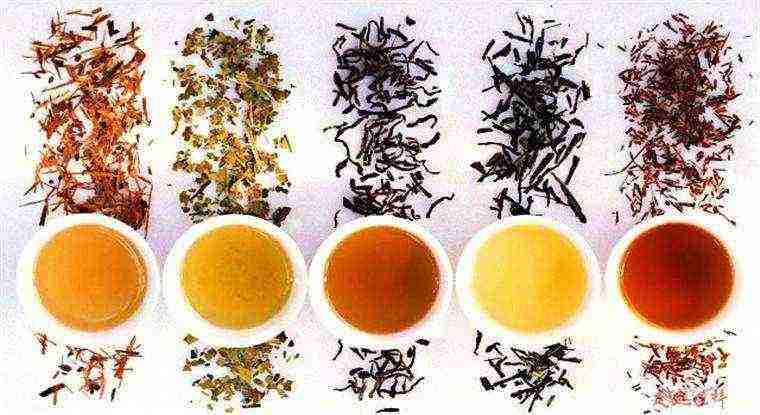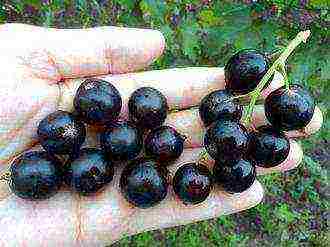Content
- 1 What is this plant?
- 2 Where does it grow?
- 3 How are they processed?
- 4 Fermentation
- 5 Green tea
- 6 Yellow teas
- 7 White tea
- 8 Oolong (oolong)
- 9 Red tea
- 10 Black tea quality
- 11 Puer
- 12 What kind of tea is there?
- 13 Which tea maker is the best?
- 14 Which tea is better to buy?
- 15 1. Real black tea - Puerh
- 16 2. Classic red tea - Darjeeling
- 17 3. Exclusive white tea - Baihao Yinzhen and Baimudan
- 18 4. Chinese turquoise oolong - Tie Guanyin
- 19 5. Elite Oolong - Da Hong Pao
- 20 6. Ginseng Oolong
- 21 7. Japanese green tea - Sencha
- 22 8. Gourmet Bound Tea
- 23 9. Matcha - powdered green tea
- 24 10. Lapacho - South American herbal tea
- 25 11. Mate - a tonic drink
- 26 12. Rooibos - African herbal tea
- 27 13. Zhou Gui - collectible Wuyishan oolong
How many people in the world - so many opinions as to which varieties of tea are the most delicious and healthy. In addition, it is difficult to determine the best varietal tea because there are many types and varieties of this ancient drink. We will try to understand all this diversity and decide on the best varieties.
What is this plant?
Before talking about what tea is, the varieties and types of this drink, let's remember the plant that contributes to its appearance. The tea bush is an evergreen plant, its "native" region is the highlands of Tibet, northern India and China. In the modern world, it is called a camellia and the following types are distinguished:
- Assamese
- Chinese;
- Cambodian.
The main difference between these species is that the Chinese camellia has small leaves and prefers the cool climate of the Asian highlands, while the Assamese, with larger leaves, prefers the humid tropics of the northeastern regions of India, the Yunnan and Sichuan provinces in China.
The Cambodian tea bush, grown in several parts of Indochina, is a hybrid form obtained by crossing the Assamese and Chinese. Assamese camellia in nature can grow up to 15 meters in height, but in industrial cultivation, for the convenience of processing and collection, its growth is limited to 1.5-2 m. Young leaves and shoots, from which different varieties of tea are made, grow every five days, which allows you to collect them all year round. The peculiarities of collecting and processing the leaves of the same plant make it possible to obtain the following types of tea:
- green;
- black;
- White;
- oolong (oolong).
Where does it grow?
Since tea is grown on the territory of only a few states, in addition to other accepted classifications, it is subdivided by country of origin into:
- African;
- Chinese;
- Indian;
- Ceylon;
- Japanese;
- other.
The "youngest" tea plantations are located in Africa, in countries such as Kenya, Cameroon, Uganda, South Africa, Zimbabwe and some other former British colonies. African teas are only black.
About 10% of the world's total tea production is produced on the island of Ceylon, as Sri Lanka used to be called. These are mainly black teas and a very small amount of green.
In Japan, only green tea is produced, and most of it goes to the domestic market and only a small fraction is exported.
India ranks second in the world in terms of the amount of tea produced, second only to China. Most of the manufactured products are granulated and cut black teas, and very little green. In addition, such an elite tea variety as Darjeeling is grown on the highland plantations of this country.
The undoubted leader of the world tea market is China, which supplies popular black and green teas. In addition, it is only in this country that oolongs, pu-erhs, white and yellow teas are made.
How are they processed?
Once harvested, the tea leaf is processed in various ways, such as:
- drying;
- drying;
- twisting;
- roasting;
- smoking;
- fermentation;
- others.
Different types of tea are obtained depending on the processing method.
Fermentation
Fermentation is one of the main treatments for harvested tea leaves. After the leaves are harvested, they are slightly dried and twisted, and then laid out in a layer up to 10 cm. In the process of rolling, the leaves begin to secrete juice, which is oxidized in the open air and begins to ferment at a temperature of +25 ° C to +27 ° C. High humidity and constant oxygen supply promote enzymatic processes. In terms of time, this process can take from several minutes to 3 hours, and to stop it, drying the sheet at high temperatures is used. The longer it takes, the darker the tea will turn out. By the time of fermentation, the resulting teas are:
- Unfermented (green).
- Weakly fermented (white and yellow).
- Semi-fermented (various oolongs).
- Fermented (black).
- Re-fermented (pu-erh).
Let's consider in more detail each of these types.
Green tea
The peculiarity of making such tea is that immediately after harvesting, the leaf is dried, thus stopping the oxidation and fermentation processes. In the final stage of processing, green teas can:
- bake;
- steamed immediately after picking and dried after curling the sheet;
- dry under the sun.
But the most popular and widespread is tea, roasted at the final stage of processing. The best teas of this type:
- Dong Ting Bi Lo Chun ("The Emerald Spirals of Spring from Dongting").
- Xi Hu Long Jing ("Dragon Well from Lake Xi Hu").
- "Pumpkin seeds from Liu An" (Liu An Gua Pian).
Green teas are brewed with soft water heated not higher than 90 ° C, receiving an infusion of a dull yellowish-green color. Its taste is rich, and the aroma is memorable and bright.
Yellow teas
For quite a long time they were a privileged drink - only the emperors of the Middle Kingdom and their entourage drank such tea, and the export of these varieties from China was punishable by death until the 20th century. It is produced only in the Chinese provinces of Hunan and Fujian, from high-quality raw materials - small young buds of a tea bush. Because of this, all its types are elite varieties of tea. Due to the use of different raw materials, they are divided into two groups:
- "Big", for which buds with 2-5 leaves are collected (Ying Shan Huang Ya, Ho Shan Huang Ya);
- "Small", for which only individual buds are collected, are allowed with an intact and healthy adjoining tea leaf (Meng Ding Huang, Gui Shan Mao Jian, "Silver Needles from the Mountains of the Immortals" (Jun Shan Yin Zhen)).
They differ significantly from other types of tea in both their taste and aroma. Due to the rather high content of caffeine, yellow teas perfectly invigorate, restore strength and activate the defense mechanisms of the human body. Yellow tea is known mainly to rare amateurs and experts both here and in other European countries.
White tea
It was so named for the color of the thick cannon covering the buds from which it is made. It is made in an effort to preserve all the natural properties of the tea leaf almost in its original form. Therefore, in the process of its production, the raw material is only withered and dried. For the production of expensive elite varieties, such as "Silver Needle" (Bai Hao Yin Zhen) and "White Peony" (Bai Mu Dan), only the buds of special varieties of tea bushes are used, as well as the leaves that have just come out of them. Less expensive and more affordable white teas are also produced, such as Gong Mei (Gift) and Shou Mei (Elder's Eyebrows). For their production, large, as well as damaged and rejected buds and young leaves for elite varieties are used.
White tea is very capricious and requires strict adherence to the rules of storage and transportation.However, in its healing properties, due to the combination of substances contained in its composition, it surpasses all other types of tea. Scientists have found that the Chinese reasonably consider white tea an elixir that gives immortality, since the constant use of it preserves health and prolongs youth.
Oolong (oolong)
This is a semi-fermented tea, it is, as it were, intermediate between black and green tea. Oolongs (in another transcription - oolongs) appeared on the Russian market relatively recently. Oolong tea is also called blue-green or turquoise because of the special shade of dry tea leaves in some varieties and infusion in others. A feature of the production of such teas is the special care with which the tea leaves are rolled, trying not to break, after which they are left for several hours in the shade in the fresh air for slow fermentation. A feature of this variety is the uneven fermentation of the tea leaf, since it is quite strong at the edges, but in the center it is almost absent. Thanks to this, oolongs are distinguished by a special aroma and taste, combining the astringency of black tea and the slight tenderness of green tea. In addition to fermentation, oolong tea is flavored with various plant and fruit extracts, both natural and artificial. Such teas are exported, as the Chinese prefer to consume the pure product without any additives.
Red tea
This species is highly fermented, which means that under the influence of oxygen, from 70 to 90% of the juice of the tea leaves is oxidized. In China, it is traditionally called red tea, describing the color of the drink, but Europeans consider it black, starting from the color of dry tea leaves. Today it is subdivided into the following types of tea: long tea (leaf), granulated, pressed, packaged. In our country, all of the listed types are known and sold, but of the pressed ones, the over-fermented pu-erh is better known, sold in the form of discs, tiles and tablets. Ordinary black tea in this form is found in regions located near China, for example in Buryatia.
The most popular Chinese varieties of black tea are:
- Yunnan, better known in Europe as Dian Hong. This tea belongs to the elite and expensive varieties. It differs not only in its amber-red color, but also, according to experts, in the richness of the combined tastes of dried fruits and wood.
- Qi Men Hong Cha, or Keemun, is the most famous and popular type of red tea among Europeans. It is distinguished by a complex taste, in which the aroma of honey, cinnamon and pine bark warmed up in the sun, a light aftertaste of dried fruits and wine perfectly "coexist". The color of the brewed drink is garnet-red, which does not change during repeated brewing.
- Darjeeling is an elite tea. The highest grade, prized by collectors for the variety of flavors and shades of spring, summer and fall harvest. It is grown, as already mentioned, in the highlands of Indochina, where a special soil composition, rather low temperatures and high humidity, and even the location of the plantation form the unique taste of this variety.
- Assam is a large leaf tea grown in the Brahmaputra river valley in northeastern India.
- Ceylon is a high-quality tea from the island of Sri Lanka, familiar to the older generation from childhood from a pack "with an elephant".
Black tea quality
Depending on the quality of the tea leaves, black tea is divided into three main groups - high-grade, medium-grade and low-grade.
Unblown buds and young leaves of the tea bush go to the highest quality and high-grade tea. It is divided into several types:
- pitch - made from young buds and leaves;
- orange - elite large-leaf tea, so named because of its beautiful slightly orange hue;
- orange pitch - pekoe and orange are mixed in it, this is a tea mixture that does not contain buds.
Middle-class varieties are produced from cut or broken leaves obtained in the process of making high-grade varieties. Broken pekoe and Broken orange pekoe are medium-grade tea, the first grade in our understanding. Low-grade teas are made from waste products and crushed leaves. This category includes instant, granulated and packaged teas. Most of them are produced in Ceylon and India. Such teas are strong and brew quite quickly, but their taste and aroma are not very good.
Puer
In China, this is what they call black, in their understanding, tea. It is traditionally made from green and then pressed in the southwestern Chinese province of Yunnan. The peculiarity of pu-erh is that, like good cognac, age only improves its quality and taste. In addition, fermentation processes in it continue throughout the entire shelf life. This tea is of two types: sheng - light, traditionally made, and shu - dark pu-erh, produced using modern technologies.
Where to start if you want to become a tea connoisseur - or just find, finally, exactly the tea you can enjoy every day? Let's figure it out in this article. And first, let's remember
What kind of tea is there?
When they talk about "teas", what do you think they mean?
Everyone knows that tea is a plant, a tea bush. Plants of different varieties, from the point of view of botany, have different decorative or physiological characteristics. For example, two varieties of peonies or tomatoes may differ in appearance, have different color and shape of petals, size and taste of fruits, etc. And many still think that green and black tea is made from different plants. In fact, there is one type of tea plant - Chinese camellia - and many varieties of it. The type of tea (green, black, yellow, etc.) depends on the processing of the tea leaf.
We won't go into botanical details. After all, the taste, aroma and color of the finished drink matter for the buyer. And these indicators are determined commercial grade.
Commercial grade of tea - an indicator of quality
The trade grade of tea is made up of many factors. In addition to the type of tea plant (Chinese, Assamese, Cambodian), the following is taken into account:
- the place of growth of the plant itself (this country of origin, the most famous are Chinese, Indian, Ceylon, Kenyan and other teas from Africa, Georgian, Vietnamese, Japanese and, of course, native Krasnodar, characteristics plantations),
- time and conditions of collection (which leaves are collected, manually or by machine, harvest season, etc.),
- features of sheet processing (drying, twisting, crushing and many other special processes).
And that's not all - many types of tea are obtained by blending and additional aromatization (there is nothing wrong with that if the flavors are natural).
All of these factors affect the final grade of tea. As a result, we can read on the pack, for example, "Chinese green large leaf tea (... the name of the company)". Every word counts here.
Blending is another reason for the variety of teas
Blending (or simply blending) is done by tea packing factories. Each blend gets its own unique name and sometimes becomes the “face of the company”. The composition of such a mixture may include 1-2 dozen varieties of tea leaves grown in different countries.
Which tea maker is the best?
In Soviet times, we had access to one type of tea, which many still miss ("with an elephant"). Then the country rushed to the other extreme, and only imported tea could be bought in stores. Now the choice is great, there would be money.
It is very difficult to choose the best tea maker. Mainly because the same company produces 3-5 different brands of tea in several price categories - expensive, medium, economy.And ardent adherents of Greenfield tea, in fact, choose the same manufacturer as the thrifty lovers of the Princess Nuri brand (both are made by Orimi Trade). Therefore, the definition of "the best tea producer" is rather arbitrary.
Among the Russian tea producers, we note the following companies:
- "Orimi Trade", she owns the brands "Princess Nuri", "Princess Kandy" (as well as Gita, Java), as well as Tess, Greenfield,
- "May" - and this is not only "May Tea", but also "Lisma", Curtis,
- Unilever - "Beseda", Brooke Bond, Lipton (the owner of the company is England, but the production is located in Russia).
Among foreign teas, the most famous are "Dilmah" (supplier of Ceylon tea), English "Twinings", «Ahmad ",Ceylon "Riston"(positions itself as "premium English tea"), «Akbar ".
When selecting teas for the rating, we based on customer reviews and research results. We have not considered rare, elite and expensive varieties sold only at auctions or in tea shops with a narrow specialization. The rating contains popular trade varieties of black and green teathat are easy to find in shops near your home.
Which tea is better to buy?
The answer is simple and complex at the same time - to choose "your" tea, you need sample, make mistakes and try again. If two packs have the same markings, one variety and country of origin, it is not yet a fact that you will equally like both infusions. One and the same tea of the same company, but from different batches, may suddenly become of a different taste.
Therefore, if you have found the very taste, try to find out everything about it: what kind it is, where it was produced, when it was harvested, where it was packed, and even where you bought it, because all these factors matter. And also remember →
The best kind of tea can be easily spoiled by improper brewing or unsuitable dishes. Conversely, from the simplest variety, you can get a wonderful drink with a rich taste if brewed with knowledge and love.
In this article, you learned about popular teas that customers have a positive response to. It contains the best varieties of black and green tea according to the majority.
We hope our rating will help you not to get lost among the boxes of tea and make the right choice. Happy shopping!
Give tea - it means to give pleasure, because to find someone who does not love this drink, it is hardly possible. Tea is a gift - not just a win-win for any occasion but also an opportunity to show individual approach. But among the hundreds of items to make a good choice? In this collection there are 13 varieties, which will impress even the true connoisseur of tea.
1. This black tea - Puer
The famous Chinese Pu-Erh is produced by special technology, which makes it not only an unusual taste, but also the unique properties. Erh is known as a drink unsurpassed invigorating and energizing effect. That is why it is so popular among people who work long hours, especially among men - picking tea for the boss or colleagues, feel free to purchase a high quality Puer.
Usually, a good tea - it is fresh tea, but Pu-erh to the contrary. What he is "older", more useful and more expensive. If you are not sure that people are already familiar with this variety, choose Shu Puer ( "mature") - a drink with a rich sweet flavor and aroma of dried fruits. Another common variety, Shen Pu-erh has a specific flavor damp earth and rotting leaves.
2. Classic red tea - Darjeeling
When choosing a gift for the older generation remember the delight with which they talk about the Krasnodar and Georgian tea, popular in the days of their youth. Your parents and grandparents surely today will be happy to enjoy the strength and a deep aroma of a classic red tea. Therefore, you should pay attention to the Indian high-grade, the best of which is considered to Darjeeling.
3. The exclusive White Tea - baihao yinzhen and Bai Mudan
There are only 4 varieties of white tea in the world, so each of them is considered elite. Would you like to make a special gift to a loved one who is also well versed in tea? Choose exquisite varieties such as Baihao Yinzhen (Silver Needles) or Baimudan (Silver Peony).
It has been proven that of all varieties of tea, it is white tea that is the most useful. It is made from the young leaves and buds of the tea bush and contains the maximum amount of vitamins. White tea has a delicate, "clean" taste and a light herbal aroma. This is a drink for sophisticated people who like to enjoy tea in peace and quiet.
4. Chinese turquoise oolong - Tie Guanyin
Tie Guanyin is the classic and most famous of the Oolong family. Has a mild, fresh taste and a long-lasting sweet aftertaste. The taste of this tea evokes pleasant associations with the aroma of spring flowers, young honey and aromatic herbs.
Tie Guanyin is suitable for evening teas, as it soothes and relieves stress after a working day. Green tea fans will surely love it: Tie Guanyin contains even more antioxidants and essential oils, but unlike green tea, it does not give bitter and tart shades when brewed.
5. Elite Oolong - Da Hong Pao
The legendary Da Hong Pao is the most expensive of the Oolongs. This variety will appeal primarily to lovers of classic tea: it gives a rich color, a rich, slightly sweet taste and a spicy aftertaste.
Like any good Chinese tea, Da Hong Pao has many healing properties: tones, invigorates, warms and improves metabolism. You can drink it in any weather and at any time of the day. Feel free to choose Da Hong Pao as a worthy present for an unfamiliar but respected person.
6. Ginseng Oolong
It is no coincidence that Oolongs are highly valued all over the world - as soon as this tea is brewed, everything around is filled with the amazing aroma of summer. Ginseng Oolong is an option that ideally combines the flavor intensity of flavored tea with the natural benefits of natural ingredients.
Ginseng Oolong is made from quality teas, crushed ginseng root and other Chinese herbs. Its mild taste and revitalizing properties literally energize the body - present this tea to business people who are often tired and in need of relaxation.
7. Japanese green tea - Sencha
Everyone knows about the benefits of green tea, but everyone loves its taste for its characteristic bitterness. Sencha is a traditional Japanese variety that will help redefine green tea. The raw materials for it are harvested in early spring, due to which it has a light and delicate aroma of young tea leaves.
In Japan, Sencha is widely known as the “everyday variety” because it is great for everyday teas. The soft taste of this tea is often decorated with floral and fruit additives - for example, the original variety called "Morgenthau" is widely known. You can present such tea to friends, young colleagues and family people, and even children like flavored Sencha.
8. Gourmet Bound Tea
Bound tea is perhaps the most beautiful of all tea gifts. It is a composition of several varieties of teas, combined by hand. As a rule, there is a flower inside it - a clover, a peony or a lily. Brewing such tea in a transparent bowl, you can see how the composition gradually unfolds.
The aesthetic component of the brewing process will be appreciated primarily by women. Moreover, bound tea is usually based on green varieties, and the infusion turns out to be unusually soft and fragrant.
9. Matcha - powdered green tea
Is your friend seriously interested in oriental culture and interested in tea ceremonies? Present him the most ancient variety of Japanese tea - matcha, and he will appreciate the originality of such a gift.
Matcha is an expensive variety of powdered green tea. Contains high amounts of caffeine - one cup is believed to energize the body for 6 hours.The person feels cheerful, but at the same time remains calm. Matcha has been scientifically proven to stimulate mental activity, so it can be gifted to students and intellectuals.
Coffee as a gift - 13 exquisite varieties that are not ashamed to give to connoisseurs
10. Lapacho - South American herbal tea
You are very familiar with the taste preferences of loved ones, but sometimes you also want to surprise them with an unusual gift? In this case, pay attention to the category of "herbal teas", for example, Lapacho - an ethnic drink originally from South America. Like all herbal drinks, lapacho is very healthy and caffeine-free. It is distinguished by a pleasant taste with a slight bitterness.

11. Mate - a tonic drink
Despite the fact that the culture of drinking mate has been known for a long time in Russia, for many people this drink is still exotic. Mate perfectly tones, relieves fatigue and increases endurance. Regular consumption of this drink reduces appetite, alcohol cravings and smoking. Thanks to such unique qualities, it will be an excellent gift for young people leading an active lifestyle, athletes and girls who maintain an impeccable figure.
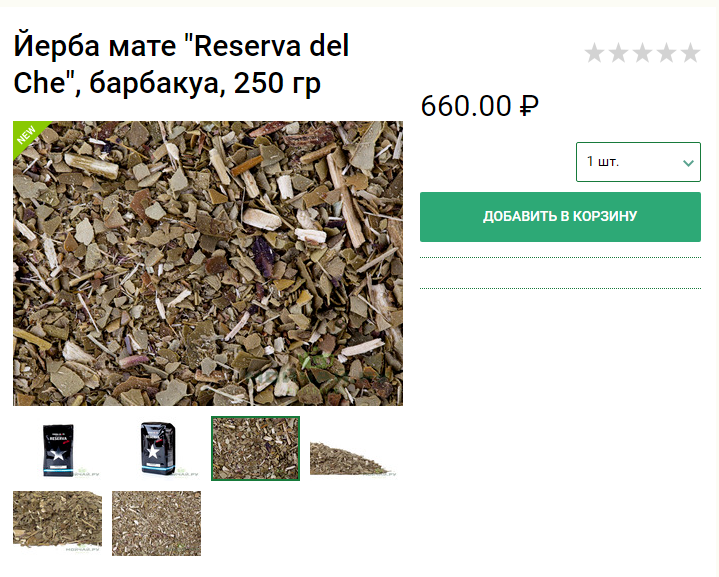
12. Rooibos - African herbal tea
Rooibos is a unique herbal tea made from African bush shoots. This drink has a pleasant sweetish taste and goes well with various aromatic additives.
Rooibos has no contraindications and does not contain caffeine, which means it can be drunk in any quantity. It can be safely presented to pregnant women and nursing mothers, and rooibos with berries, fruits, vanilla and caramel is a favorite drink for children.
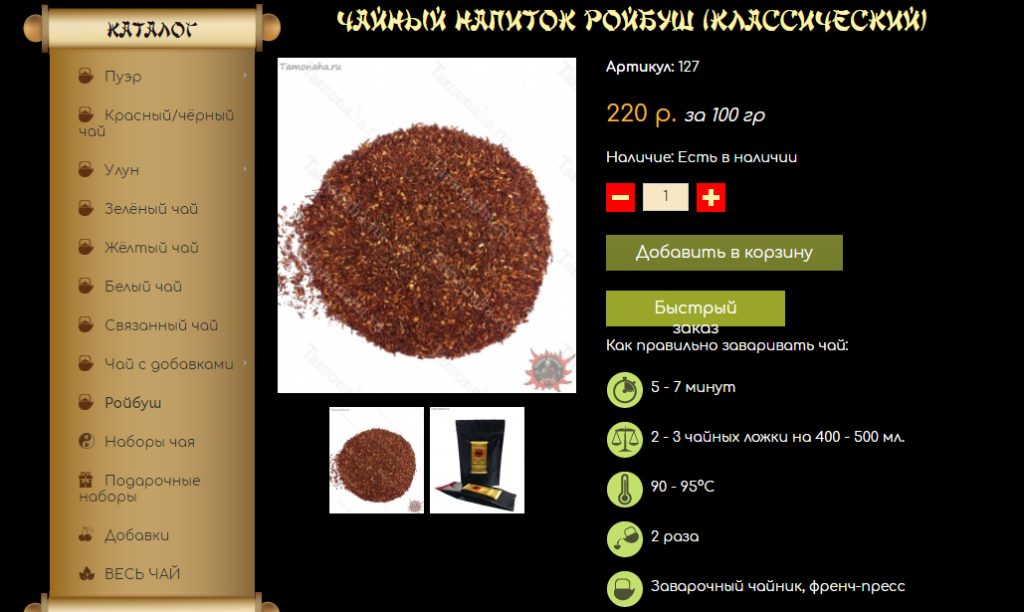
13. Zhou Gui - collectible Wuyishan oolong
A special occasion or a significant date is an occasion for exclusive gifts. Therefore, if you decide to give tea, try to find a truly unique variety. Each collection tea is a drink with its own unique history. For example, the 2004 Wuyishan Oolong Zhou Gui is a great collection tea for a real tea ceremony or special occasion.
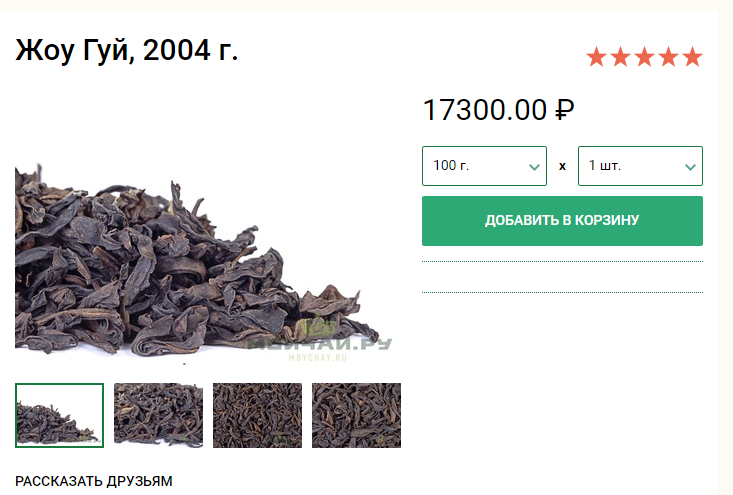
And finally. Remember that women appreciate the beautiful decoration of a gift, while for men, the very quality of the tea is of paramount importance. It is advisable to accompany the gift with a short story: what is interesting about this variety, why did you decide to give it exactly. And of course, high-quality tea must be accompanied by recommendations for brewing - only a properly prepared drink will reveal its unique taste and unique properties.
Black or green tea?
Green and black tea can be obtained from the leaves of one bush. The difference in color, taste, useful properties is achieved by the time of fermentation of the leaves.
Green tea undergoes minimal oxidation, due to which it retains a unique set of vitamins and elements.
For black tea, the leaves are subjected to maximum fermentation, which allows you to obtain a rich color, tart and bright taste of the drink.
Numerous controversies in favor of choosing black or green tea do not have a clear answer. Both drinks can benefit or harm the body.
Black tea is useful in that it:
- has a long-term invigorating effect, due to which the work of the brain is enhanced;
- improves blood circulation, helps to cleanse toxins;
- normalizes the digestive process;
- optimizes the general condition of the body.
However, all the beneficial properties of black tea can turn into harm if consumed excessively or improperly prepared.

Both black and green tea can be beneficial in moderation.
It is interesting that green tea appeared in our country almost on a par with black, but did not gain much popularity. Over time, its deliveries from China stopped altogether. The second wave of green tea coming to the Russian market happened 20 years ago, and now green tea has firmly established itself on the Russian market and has found its fans.
Green tea is beneficial, it:
- strengthens and supports blood vessels;
- characterized by antibacterial properties;
- has a positive effect on the liver;
- contributes to the rejuvenation of the body.
A large amount of green tea, brewing it too strong, drinking it at inappropriate periods can neutralize all the beneficial characteristics of this drink.
Advice. There is no definitive answer to the question: which tea is better to drink - black or green? To reap the benefits, it is recommended that you consume both of these drinks in moderation.
Russian tea market
The Russian tea market is represented mainly by multi-brand manufacturing companies:
- the company "Orimi-trade" produces teas "Princess (Java, Kandy, Nuri, Gita)", Greenfield, Tess;
- Unilever produces tea under the brands Lipton, Brooke Bond, Beseda;
- the May company owns the May Tea, Lisma, Curtis trademarks;
- the Sapsan company produces tea under the brands Akbar, Gordon, Bernley.
Also widely known are the following trademarks: Ahmad Tea, Hilltop, Riston, Dilmah, Maitre, “The Same”.
How to choose the best tea: selection criteria
When choosing the best tea, you need to distract from the design of its packaging and look at the labeling.
In accordance with the Russian GOST, the quality of tea is determined by its grade: bouquet (highest quality), premium grade, first, second and third grade.
International labeling is a matrix and has 10 quality indicators for the texture of a tea leaf and 7 indicators characterizing its properties.
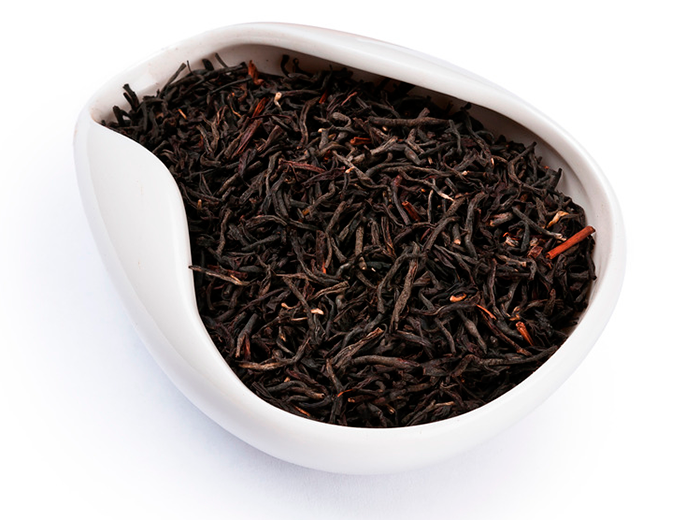
Black large leaf tea
So, the best large leaf tea will be marked with letters:
- F (Flowery) - tea from slightly opened buds, the best tea.
- P (Pekoe) is a tea made from tea buds and the first two leaves.
- O (Orange) - tea made from young leaves.
- T (tippy) - exclusive tea from tea buds, the most expensive.
- G (golden) - tea with yellow tips (buds).
- S (special) - tea, exclusive for any characteristic.
In addition to the labeling, you should pay attention to the tea material itself:
- The infusion for black tea should be almost black without gray and brown shades, for green - there should be no leaves of white or bright green;
- tea leaves should be the same without twigs, dust and tea fines;
- "Wire" (strongly twisted) leaves characterize the degree of fermentation and the quality of the tea. For green tea, weak leaf curl is not an indicator of poor quality;
- the smell should be pleasant, without foreign aromas;
- high-quality tea should be fresh, the best - from 1-2 monthly leaves. Tea material quickly loses its beneficial properties and aroma;
- the packaging must be airtight with an indication of the composition, expiration date, manufacturer in Russian.
All tea sold in the Russian mass market is collected by special machines, therefore, at best, the counters display tea labeled Orange or Orange Pekoe. Tea made from tea buds will be exclusive and expensive; it is not available on the market.
Attention! Tea bags are of the lowest quality. It is produced from tea waste, tea dust. Such a drink will not be useful.
Test purchase: tea rating 2016
Based on the results of the test purchase, a rating of loose tea was compiled. The scores were given taking into account the appearance of tea leaves, on the basis of aroma, taste, color of the brewed tea, in addition, the samples were checked for compliance with the compositions and varieties declared on the package.
Rating of black leaf tea:
- 1 place. Ahmad tea Ceylon Tea high mountain, grade FBOPF
- 2nd place. Greenfield Golden Ceylon, variety bouquet
- 3rd place. Riston Premium English Tea, premium
- 4th place. Akbar Violet Alexandrite, grade OP
- 5th place. Dilmah Ceylon, premium
- 6th place. Maisky, the top grade is declared on the package. According to experts, tea corresponds to the 2nd grade. Teapots of lamellar structure, not twisted enough

Chai Ahmad - Leader of Test Purchase
The first place, according to consumers' estimates, belongs to Ahmad tea brand black leaf tea.This tea has the ability to form a transparent infusion of bright color, has a pleasant taste and clean aroma. The organoleptic characteristics of all samples were at their best, the content of harmful impurities was not revealed.
According to the estimates of green leaf tea lovers, the rating was compiled taking into account the smell, taste, color of the brewed infusion, as well as the appearance of tea leaves, the presence of impurities.
Green tea leaf rating:
- 1 place. Greenfield flying dragon
- 2nd place. Tess style
- 3rd place. Ahmad tea Green Tea
- 4th place. Princess Java Traditional
- 5th place. Lisma Toning
- 6th place. Maitre Vert Mountain
Consumers of green leafy tea preferred Greenfield Flying Dragon tea as it has a refreshing, pleasant, mild taste, transparent greenish color and delicate floral aroma.
Fragrant, tart, dark transparent amber color, black tea is able to gather the whole family at a round table. Fresh, soft, light jade green tea will perfectly quench your thirst on a summer day. Tea drinking traditions in Russia are strong, so choosing the best tea, be it black or green, is always relevant. With a focus on quality features, labeling, packaging, this choice will be made correctly.
The best tea according to the "Test Purchase" - video
